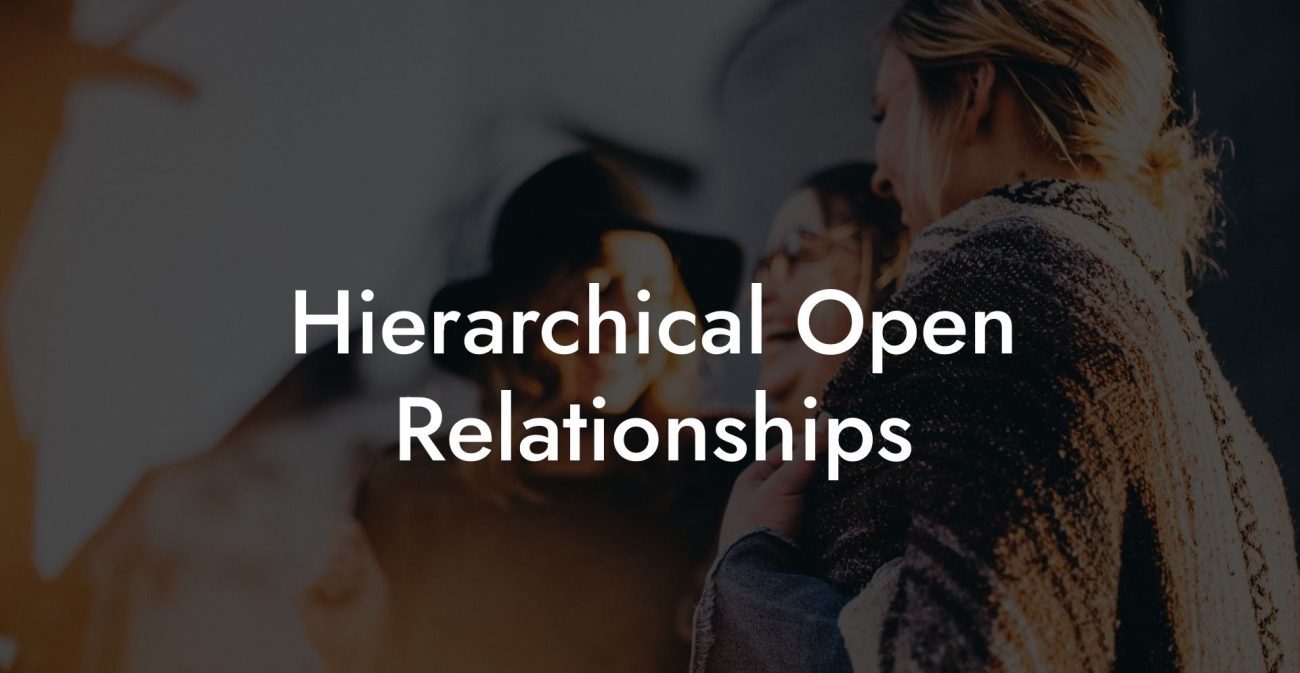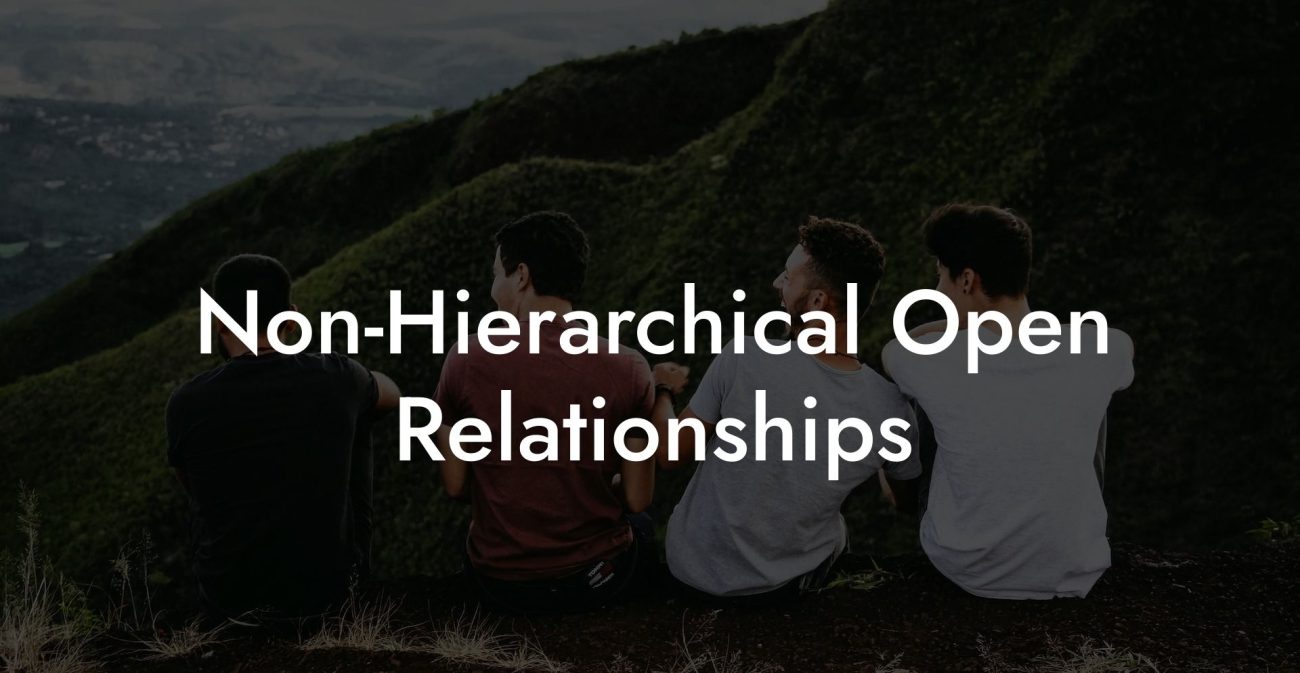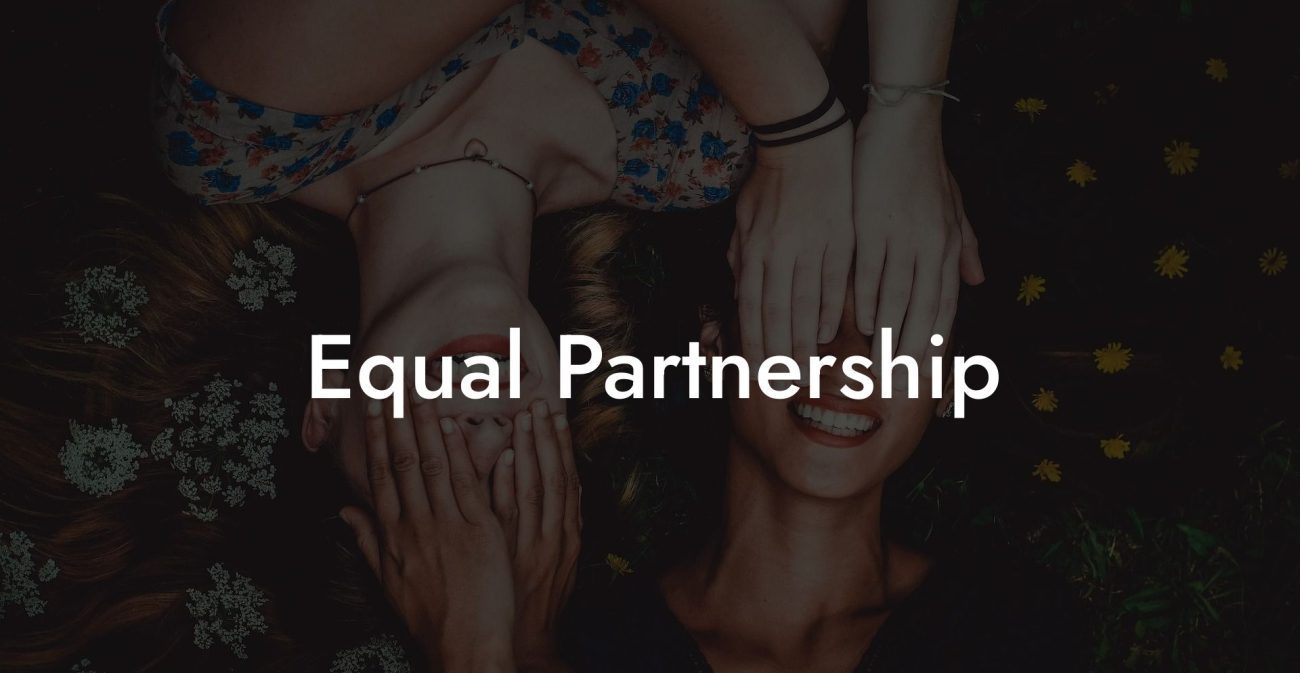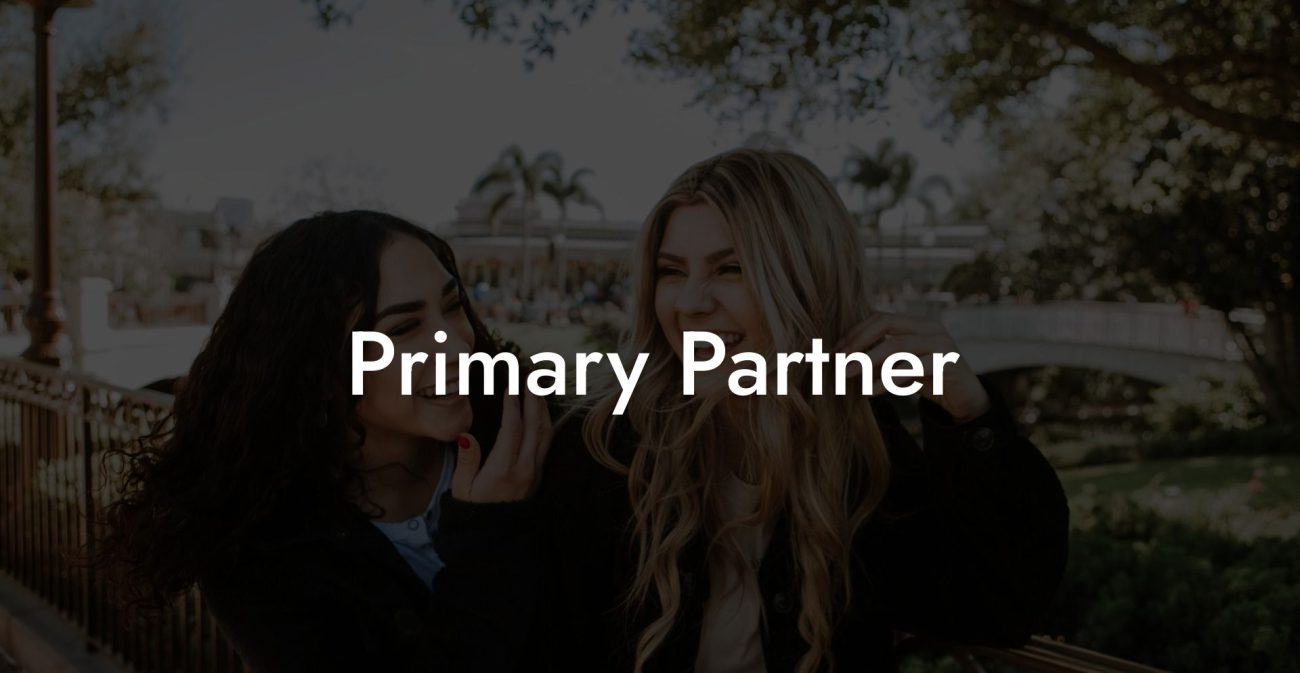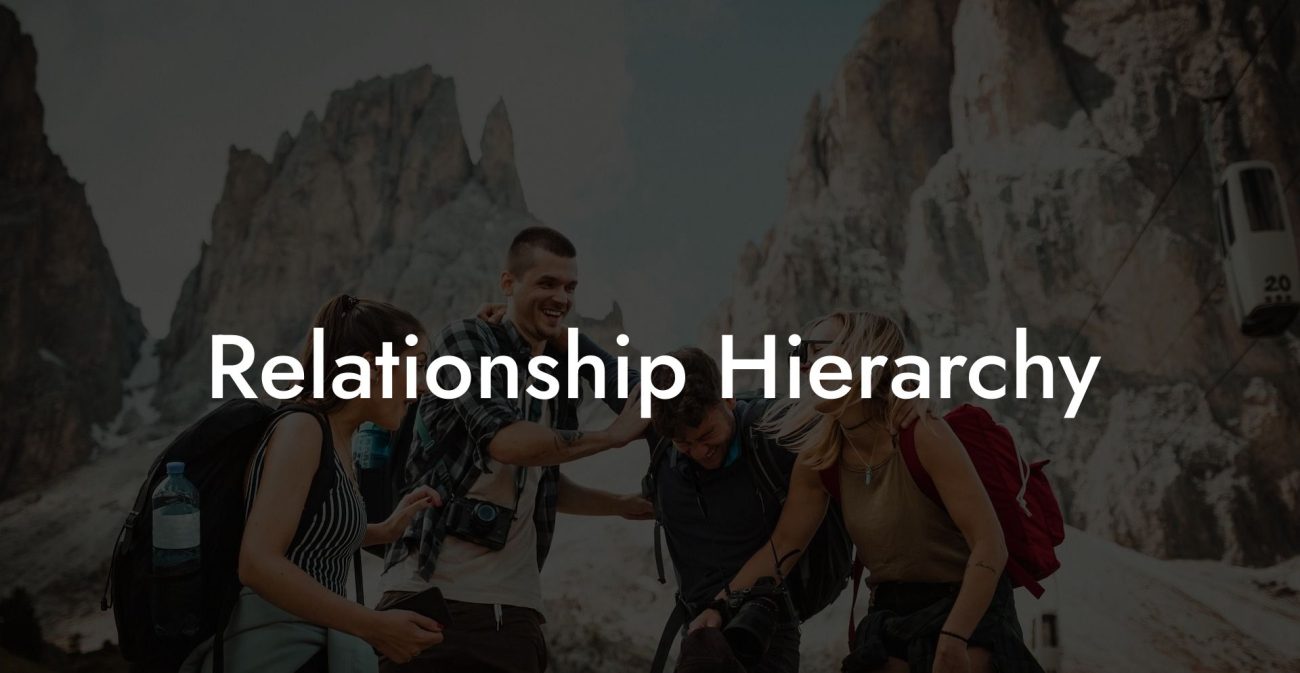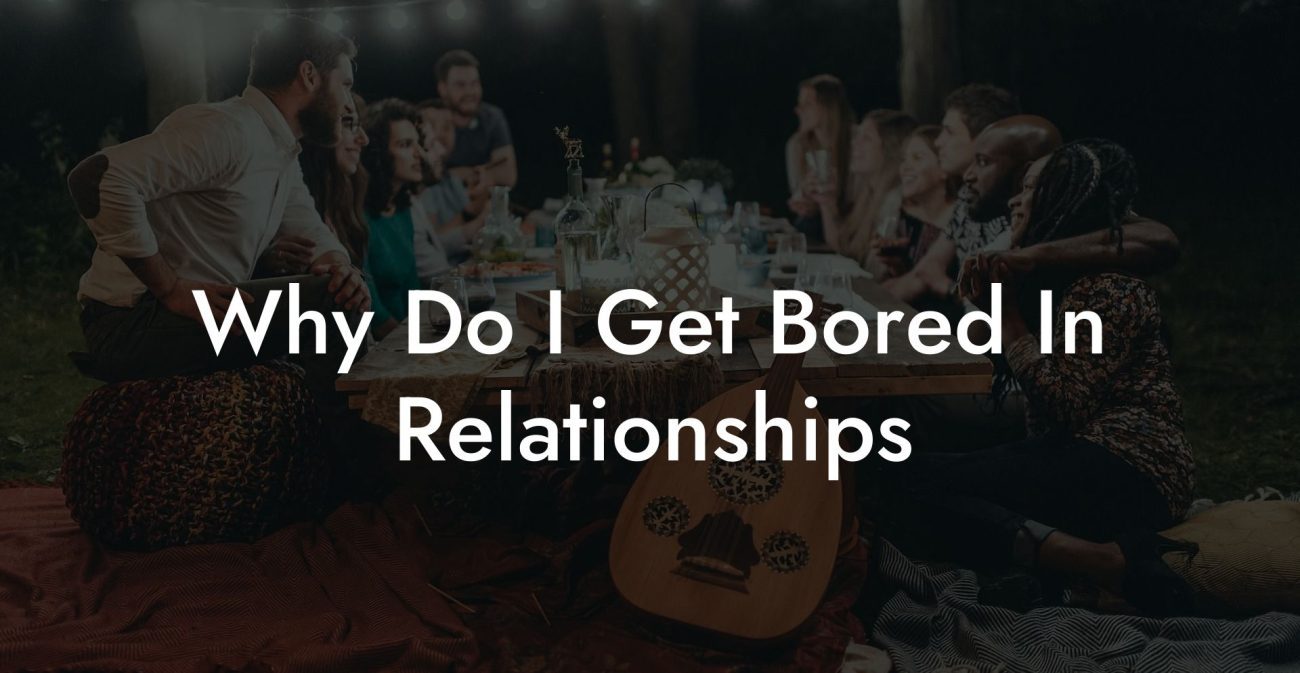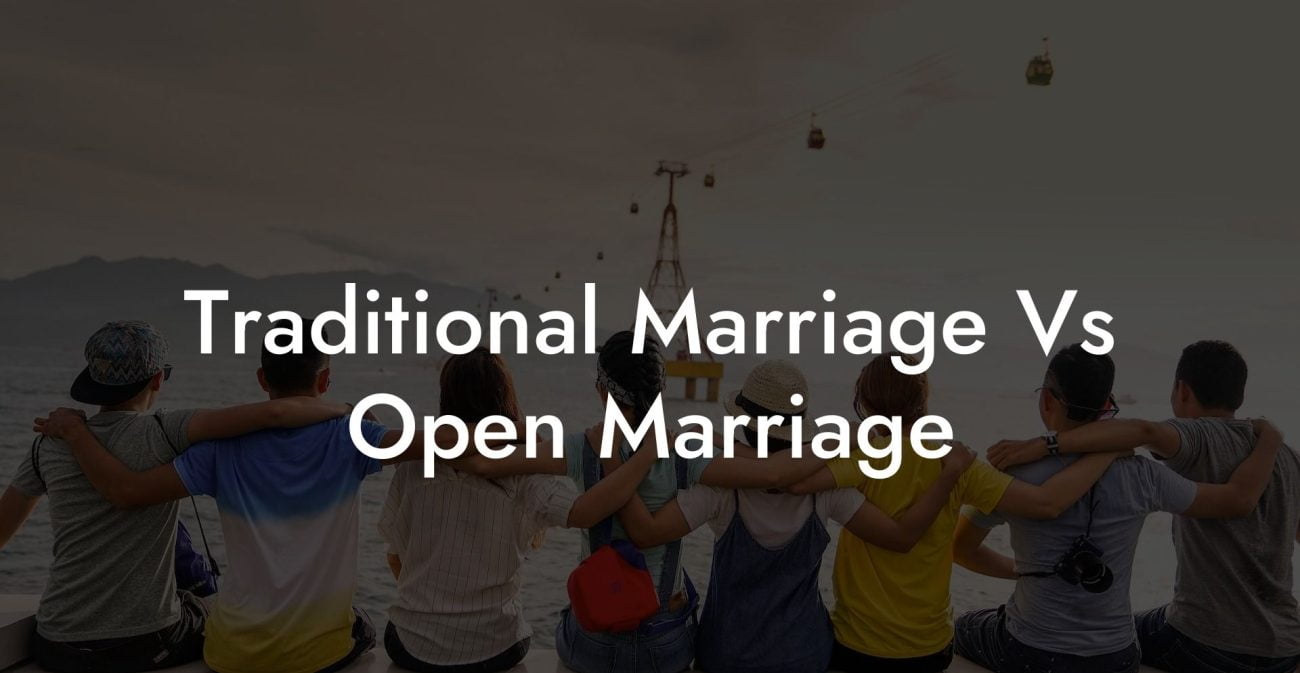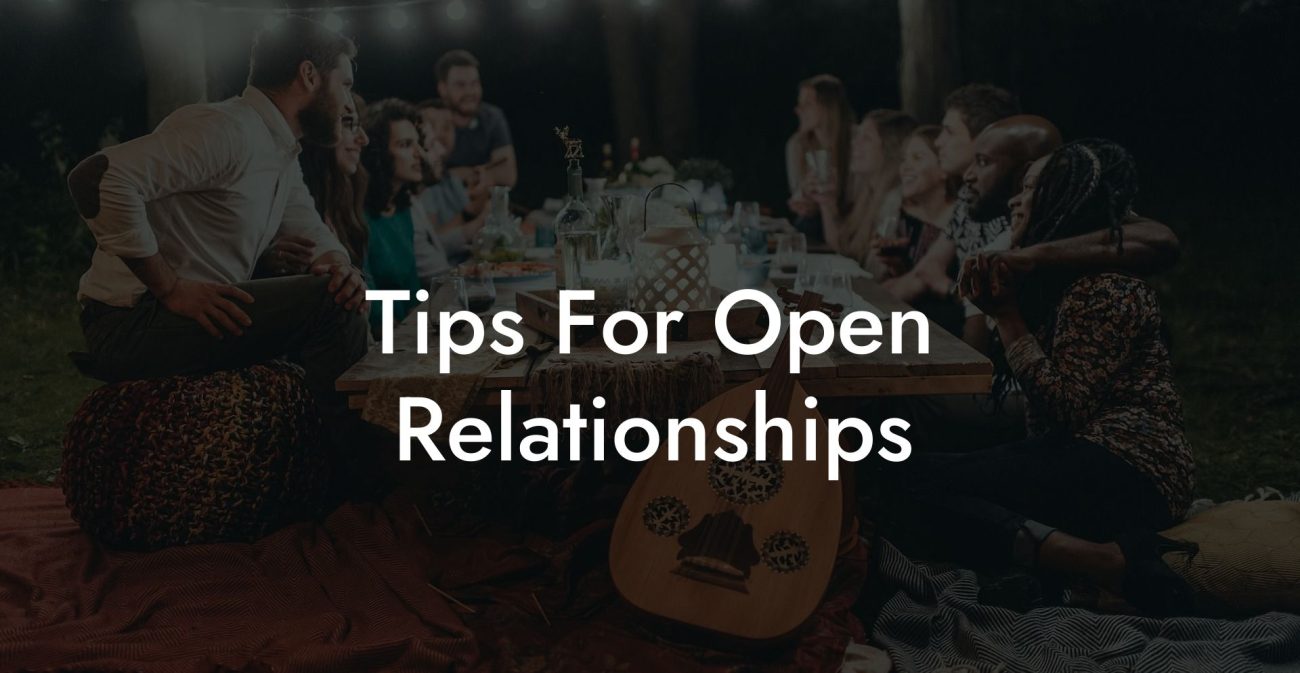Guide to Open Poly Marriage
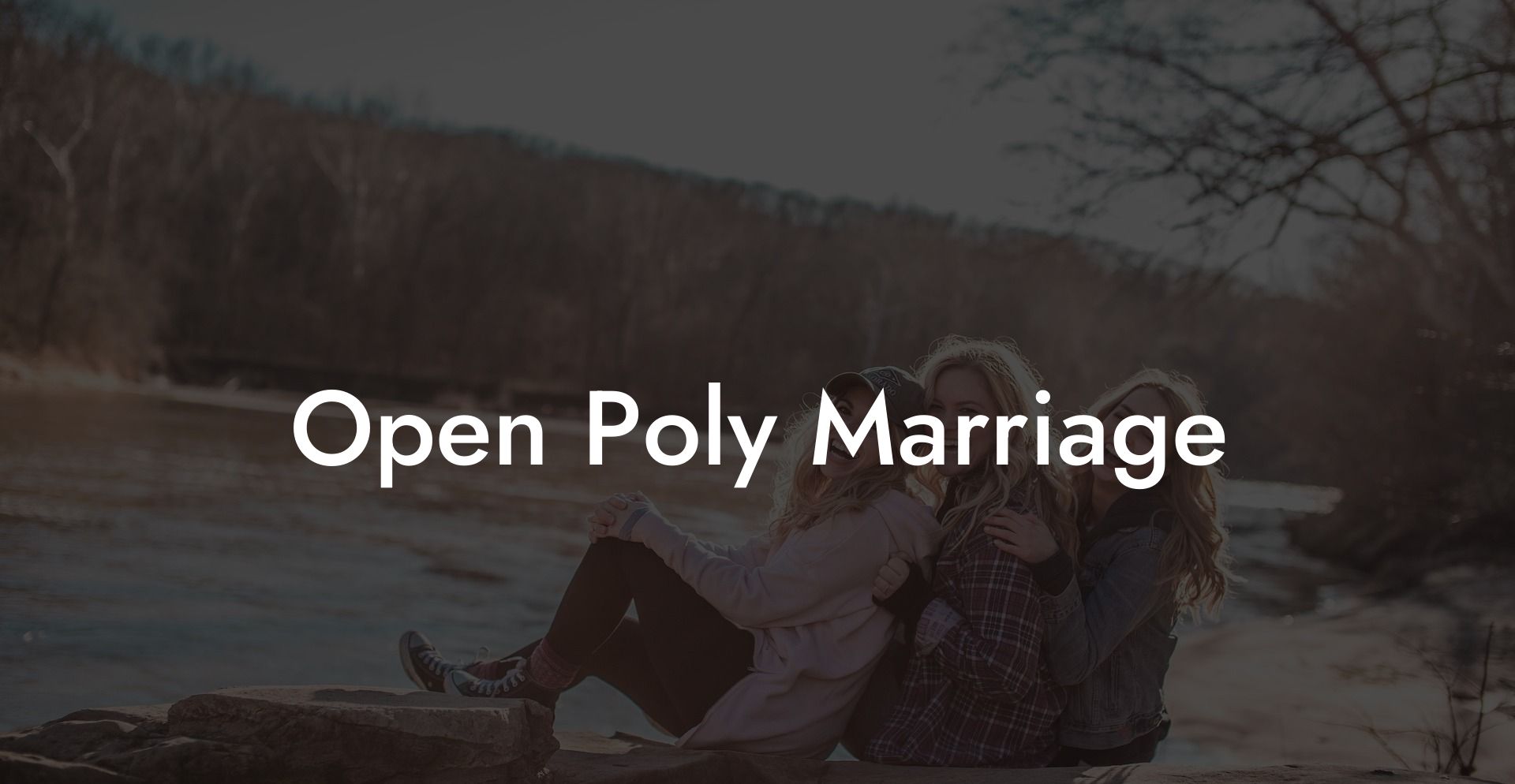
Welcome to our comprehensive guide to open poly marriage, a relationship model that combines the commitment of marriage with the flexibility of polyamory. In this guide, we explore what open poly marriage is, how it differs from other forms of relationships, and how couples can successfully navigate the unique challenges and rewards that come with it. Whether you are already part of an open poly marriage, considering transitioning to one, or simply curious about alternative relationship models, this guide provides detailed insights, practical strategies, and expert advice to help you understand and embrace this modern approach to love.
Quick Links to Useful Sections
- Understanding Open Poly Marriage
- A Quick Video Explanation
- Historical and Cultural Context
- Core Principles of Open Poly Marriage
- Benefits of Open Poly Marriage
- Challenges of Open Poly Marriage
- Communication Strategies for Open Poly Marriage
- Legal and Social Considerations
- Practical Steps for Transitioning to an Open Poly Marriage
- Real-Life Experiences and Anecdotes
- Expert Insights and Data Research Findings
- FAQ: Open Marriage Statistics 2018 (Related to Open Poly Marriage)
- Resources and Community Support
Understanding Open Poly Marriage
Open poly marriage is a consensual relationship model in which a married couple agrees to pursue additional romantic or sexual relationships with the full knowledge and consent of all involved. It blends the core tenets of open marriage and polyamory. In this arrangement, the primary couple maintains their marital commitment while also having the freedom to form additional, ethical, and meaningful relationships. The model emphasizes transparency, open communication, and clearly defined boundaries to ensure that every partner’s emotional and physical needs are respected.
Unlike infidelity or secret affairs, open poly marriage is rooted in ethical non-monogamy. Each relationship is based on mutual consent and honesty, allowing individuals to explore multiple connections without compromising the integrity of their primary bond. This model challenges the notion that love is a finite resource by asserting that love can be shared and multiplied rather than divided.
A Quick Video Explanation

Historical and Cultural Context
Although the concept of open poly marriage might seem like a modern innovation, the idea of forming multiple, consensual relationships has roots in various historical and cultural practices. In some ancient societies, multiple partnerships were common, particularly among the elite, where relationships were often structured to form alliances, secure resources, and consolidate power. While these historical practices were frequently driven by social and economic factors rather than romantic ideals, they share similarities with today’s approach to ethical non-monogamy.
In modern times, the emergence of polyamory as a self-identified lifestyle can be traced back to the sexual revolution of the 1960s and 1970s. Influenced by movements advocating for sexual freedom, gender equality, and individual autonomy, more people began to question the conventional model of monogamy. Today, open poly marriage is embraced as a legitimate alternative to traditional marriage, offering a way to experience diverse forms of love and connection while maintaining committed partnerships.
Cultural shifts in attitudes toward relationships, fueled by digital connectivity and increased visibility of non-traditional lifestyles in media, have further contributed to the growing acceptance of open poly marriage. As more individuals share their personal experiences and success stories, societal norms are gradually evolving to accommodate these diverse forms of commitment.
Core Principles of Open Poly Marriage
The success of open poly marriage relies on a set of core principles that ensure every relationship is entered into ethically and maintained with mutual respect. The key principles include:
- Free and Informed Consent: Every relationship must begin with the full, informed consent of all parties. Consent is an ongoing process that requires regular reaffirmation.
- Open Communication: Honest, transparent, and regular dialogue is essential. Partners must share their feelings, expectations, and boundaries clearly and without judgment.
- Mutual Respect and Equality: All partners are valued equally. There is no inherent hierarchy unless mutually agreed upon, and every relationship is nurtured with care.
- Flexible Boundaries: Boundaries should be clearly defined but remain flexible enough to adapt as relationships evolve. Regular reviews and renegotiations help maintain balance.
- Self-Awareness and Accountability: Each partner must engage in self-reflection, understand their emotional triggers, and take responsibility for their actions to maintain healthy interactions.
Benefits of Open Poly Marriage
Embracing open poly marriage can offer numerous benefits for couples seeking to enrich their lives through diverse emotional and romantic connections:
- Diverse Emotional Support: Multiple partners can offer different forms of support, from intellectual stimulation to deep emotional care, creating a robust network of love and support.
- Personal Growth and Self-Awareness: Navigating multiple relationships challenges you to develop advanced communication skills, emotional intelligence, and resilience. This process often leads to significant personal growth.
- Enhanced Creativity and Inspiration: Exposure to varied perspectives and experiences can spark creativity, inspiring new ideas and approaches in both personal and professional realms.
- Flexibility in Relationship Structure: Open poly marriage allows couples to adapt their relationship dynamics as their needs evolve, providing a flexible framework that can accommodate change over time.
- Strengthened Primary Relationship: Many couples find that by engaging in open poly marriage with clear rules and ongoing communication, the trust and intimacy in their primary relationship deepen, as both partners are required to be more transparent and supportive.
- Increased Resilience: A broader network of relationships can provide a safety net during times of stress or crisis, enhancing overall emotional stability.
Challenges of Open Poly Marriage
Despite its many benefits, open poly marriage also presents a set of unique challenges that require deliberate effort and ongoing management:
- Emotional Complexity: Balancing the feelings, expectations, and needs of multiple partners can lead to emotional overload. Jealousy, insecurity, and conflicts over boundaries are common and must be addressed proactively.
- Time and Energy Management: Coordinating quality time for your primary relationship and additional partners can be demanding. Effective scheduling and prioritization are critical to prevent burnout.
- Negotiating Boundaries: With multiple relationships, boundaries must be explicitly defined and continuously revisited. Miscommunication about expectations can lead to hurt feelings or resentment.
- Social Stigma and Misunderstanding: Non-traditional relationship models often face societal judgment. Couples in open poly marriages may encounter skepticism or lack of acceptance from family, friends, or the broader community.
- Legal and Financial Considerations: In many regions, legal frameworks only recognize binary marriages. This can create complications regarding legal rights, inheritance, and financial planning for couples in open poly marriages.
Communication Strategies for Open Poly Marriage
Effective communication is the cornerstone of any successful open poly marriage. Here are some strategies to help you navigate the complex dialogue required:
- Schedule Regular Check-Ins: Establish routine meetings, whether weekly, bi-weekly, or monthly, where all partners can discuss their feelings, revisit boundaries, and update each other on any changes in their external relationships.
- Practice Active Listening: Give your full attention when your partners speak. Paraphrase what you’ve heard to ensure clarity and ask follow-up questions to show genuine interest.
- Use “I” Statements: Express your feelings by focusing on your personal experience. For example, “I feel anxious when…” helps keep the conversation non-confrontational and centered on your emotions.
- Maintain Transparency: Keep all parties informed about new relationships and changes in the dynamics. Transparency builds trust and minimizes the risk of misunderstandings.
- Utilize Digital Tools: Leverage shared calendars, secure messaging apps, and digital journals to keep track of important dates, communication logs, and relationship agreements.
Legal and Social Considerations
Open poly marriage often exists outside the boundaries of traditional legal recognition. In many countries, only binary marriages are legally recognized, which means that couples in open poly marriages may need to explore alternative legal arrangements such as domestic partnerships or cohabitation agreements.
Socially, open poly marriage can challenge prevailing norms. Couples may face criticism or misunderstanding from those who view monogamy as the only valid form of commitment. However, as awareness of ethical non-monogamy grows, more people are beginning to appreciate the nuances of diverse relationship models. Building a supportive network of friends and engaging in online communities can help mitigate social stigma.
Practical Steps for Transitioning to an Open Poly Marriage
If you and your partner are considering transitioning to an open poly marriage, here are practical steps to guide your journey:
- Step 1: Engage in Deep Self-Reflection: Start by examining your own desires, fears, and relationship goals. Journaling, meditation, or speaking with a therapist can help clarify your intentions.
- Step 2: Educate Yourselves: Read books and listen to podcasts about ethical non-monogamy and polyamory. Resources like "The Ethical Slut" and "More Than Two" provide a solid foundation for understanding the principles and practices of open poly marriage.
- Step 3: Initiate an Open Dialogue: Discuss your thoughts and feelings with your primary partner. Use “I” statements to share your perspectives, and listen actively to understand their point of view. Ensure that both of you feel comfortable and supported.
- Step 4: Set Clear Boundaries: Work together to define what is acceptable in terms of external relationships. Document these boundaries in a written agreement if necessary, and agree to revisit them regularly.
- Step 5: Create a Transition Plan: If you’re new to non-monogamy, consider starting with a trial period. Gradually explore additional connections while monitoring your emotional well-being and the health of your primary relationship.
- Step 6: Build a Support Network: Join online forums, local meet-ups, or social media groups dedicated to ethical non-monogamy. Engaging with a community of like-minded individuals can offer valuable advice and emotional support during the transition.
- Step 7: Utilize Technology for Organization: Use shared digital tools to coordinate schedules, set reminders for regular check-ins, and keep track of agreements. This helps ensure that all partners are informed and aligned.
- Step 8: Prioritize Self-Care: Maintain your individual well-being by engaging in activities that nurture your body, mind, and spirit. Self-care is essential for managing the added complexity of multiple relationships.
- Step 9: Seek Professional Guidance: If challenges arise, consider consulting a therapist or relationship coach who specializes in polyamorous relationships. Professional support can provide tailored strategies for overcoming emotional hurdles and communication challenges.
- Step 10: Embrace Flexibility: Recognize that your relationship structure may evolve over time. Be open to adjusting boundaries, communication strategies, and even your overall approach as you learn and grow together.
Real-Life Experiences and Anecdotes
Personal stories offer valuable insights into the journey of open poly marriage. For example, consider the experience of Jamie and Alex, a couple who decided to transition from a monogamous marriage to an open poly marriage. Initially, they faced challenges such as jealousy and the logistical complexities of managing multiple relationships. However, by establishing clear boundaries, scheduling regular check-ins, and engaging in couples counseling, they were able to navigate the transition successfully. Today, Jamie and Alex report that their primary relationship has grown stronger, and they enjoy the diverse support and enrichment provided by their additional connections.
Another couple, Maria and John, began exploring open poly marriage after feeling that their monogamous relationship was limiting their emotional and sexual fulfillment. By joining online communities and attending local workshops on ethical non-monogamy, they gained the tools and confidence to open their relationship gradually. Through open communication and the use of shared digital tools for scheduling, they managed to balance their time effectively and maintain a deep, trusting bond. Their journey illustrates that while the transition can be challenging, the rewards in terms of personal growth and enriched connection can be profound.
Expert Insights and Data Research Findings
Relationship experts emphasize that successful open poly marriages rely on continuous self-reflection, effective communication, and a willingness to adapt. Dr. Samantha Lee, a therapist specializing in non-traditional relationships, explains, “Open poly marriage is not about diluting the love between partners; it’s about expanding it in a way that respects the individuality of each person. The key is regular, honest dialogue and a strong commitment to renegotiating boundaries as needed.”
Relationship coach Marcus Reed adds, “The transition to an open poly marriage requires patience and a lot of self-awareness. When couples invest time in understanding their own emotional needs and communicate those needs clearly, they create a supportive network that can lead to profound personal and relational growth.”
Research on ethical non-monogamy shows that individuals in open poly marriages often experience improved communication skills, increased emotional intelligence, and greater overall relationship satisfaction. These findings highlight the potential benefits of this relationship model, despite the challenges that may arise.
FAQ: Open Marriage Statistics 2018 (Related to Open Poly Marriage)
1. What is open poly marriage?
Open poly marriage is a relationship model where a married couple engages in multiple, consensual, and ethical relationships simultaneously, maintaining transparency and open communication among all parties involved.
2. How is open poly marriage different from traditional monogamy?
Unlike monogamy, which focuses on one exclusive relationship, open poly marriage allows couples to form additional connections while preserving the commitment of their primary bond.
3. What are the key benefits of open poly marriage?
Benefits include diverse emotional support, opportunities for personal growth, enhanced communication skills, increased creativity, and a flexible relationship structure that evolves with the partners’ needs.
4. What challenges might couples face in open poly marriage?
Challenges can include managing jealousy, balancing time and energy among multiple relationships, negotiating evolving boundaries, and dealing with social stigma.
5. How important is communication in open poly marriage?
Communication is absolutely essential. Regular check-ins, active listening, and the use of “I” statements help ensure that all partners remain informed, respected, and connected.
6. How can couples manage their time effectively in open poly marriage?
Using digital tools like shared calendars and scheduling apps can help manage commitments and ensure that both the primary relationship and additional connections receive the attention they need.
7. Can open poly marriage enhance the primary relationship?
Yes, many couples report that the process of establishing clear boundaries and engaging in open dialogue actually strengthens the trust and intimacy in their primary relationship.
8. What role does self-reflection play in open poly marriage?
Self-reflection is key to understanding your own needs and managing complex emotions. It enables each partner to communicate more effectively and adjust boundaries as necessary.
9. Are there legal considerations for open poly marriage?
Yes, most legal systems do not formally recognize multi-partner marriages, so couples may need to use alternative legal arrangements such as domestic partnerships or cohabitation agreements.
10. Where can I find more resources on open poly marriage?
Books like "The Ethical Slut" and "More Than Two", podcasts such as “Multiamory,” and online communities on Reddit and Facebook provide extensive insights and support for open poly marriage.
Resources and Community Support
- Books and Articles: Delve into foundational texts such as "The Ethical Slut" and "More Than Two" to gain a deeper understanding of ethical non-monogamy and open poly marriage dynamics.
- Podcasts: Listen to relationship-focused podcasts like “Multiamory” for personal stories, expert advice, and practical tips on navigating complex relationship structures.
- Online Communities: Engage with supportive forums and social media groups dedicated to polyamory and open marriage. Platforms like Reddit’s r/polyamory offer a wealth of shared experiences and advice.
- Workshops and Meet-Ups: Attend local or virtual events focused on ethical non-monogamy to connect with like-minded individuals and learn from experts.
- Therapy and Counseling: Consider seeking guidance from therapists or relationship coaches who specialize in non-traditional relationships to help you navigate any emotional or logistical challenges.
With thoughtful self-reflection, clear communication, and the support of a vibrant community, you can confidently embrace open poly marriage and build a relationship network that is both enriching and resilient.
Lost & confused by all of the terms, types and seemingly made up 3 letter acronyms?? We've got you. Check out our Ethnical Non-Monogamy Dictionary >>
Useful Interruption: Not sure which relationship vibe fits you best? Take our Relationship Test, it’ll give you the real insight into your natural relationship style. Then, dive into our binge-worthy guides (from the tried-and-true to the “wait, that’s a thing?”) and find the perfect relationship type for your life:
- Monogamy
- Open Relationships
- Ethical Non-Monogamy
- Solo Polyamory
- Non-Hierarchical Polyamory
- Hierarchical Polyamory
- Relationship Anarchy
- Swinging
Now back to the main article but yeah take the test...

